[Editor’s Note: As previously noted on the Mad Scientist Laboratory, U.S. battlefield dominance over the past thirty years has been sustained by three heretofore unchallenged pillars: 1) We have the best equipped Army in the world; 2) We have the best trained Soldiers and the most dynamic leaders; and 3) Our ability to conduct maneuver warfare is unmatched. This dominance 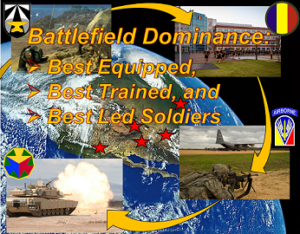 rested on efforts the U.S. Army (and its Sister Services) have made across Doctrine, Organization, Training, Materiel, Leadership and education, Personnel, Facilities, and Policy (DOTMLPF-P). We know that any technological advantages in the materiel domain will be fleeting. Additionally, we know that our adversaries are exploring ways to sidestep U.S. conventional dominance in fields cheaper to cultivate and maintain — cyber, information, and artificial intelligence among them — buying time and perhaps rendering battlefield superiority unnecessary. But what if an adversary “steals a leaf from our playbook” and starts to modernize across the DOTMLPF-P as well? Read today’s guest blog post by Dr. Jacob Barton, senior contract intelligence analyst, TRADOC G-2, to learn how China’s People’s Liberation Army (PLA) is doing just that in its endeavor to secure the Chinese Dream!]
rested on efforts the U.S. Army (and its Sister Services) have made across Doctrine, Organization, Training, Materiel, Leadership and education, Personnel, Facilities, and Policy (DOTMLPF-P). We know that any technological advantages in the materiel domain will be fleeting. Additionally, we know that our adversaries are exploring ways to sidestep U.S. conventional dominance in fields cheaper to cultivate and maintain — cyber, information, and artificial intelligence among them — buying time and perhaps rendering battlefield superiority unnecessary. But what if an adversary “steals a leaf from our playbook” and starts to modernize across the DOTMLPF-P as well? Read today’s guest blog post by Dr. Jacob Barton, senior contract intelligence analyst, TRADOC G-2, to learn how China’s People’s Liberation Army (PLA) is doing just that in its endeavor to secure the Chinese Dream!]
The purpose of this document is to broadly characterize significant aspects of China’s PLA through the framework of DOTMLPF-P. It also seeks to address China’s processes for determining when materiel or non-materiel solutions are necessary to improve PLA capabilities.
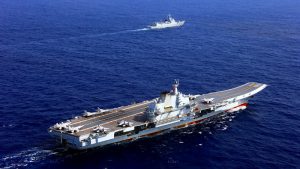
China’s leaders view themselves in a competition with the West. The U.S. is considered China’s primary strategic threat and, therefore, its pacing threat. China’s views on strategic competition have fueled its efforts to expand its Navy, now the largest in the world, and expand its regional footprint with several man-made islands. With the dangers of disputes over territory, China considers Taiwan, Tibetan, and Turkistan separatists to be significant threats. China uses these issues as the basis for PLA training exercises and its military capability development.
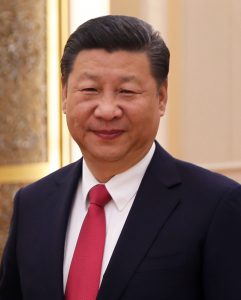
China has a unique scientific process for capability development that starts with the Central Military Commission (CMC). The CMC is also the primary entity responsible for China’s equivalent of the DoD’s DOTMLPF-P analysis. The CMC is a parallel national defense organization for the Chinese Communist Party (CCP) or Party CMC, and the People’s Republic of China or State CMC. PLA Command and Control resides with the Party CMC.1 Though the State CMC is less significant to PLA decision-making, both halves of the CMC fully reflect the CCP’s core national interests, as expressed by its leader, President Xi Jinping, and drive the development process across the depth of the organization.
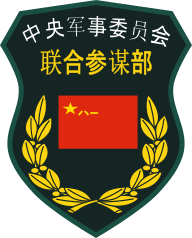
In 2016, China reorganized the CMC. It now has 15 functional sections, including seven departments (offices), three commissions, and five directly affiliated bodies. The CMC Joint Staff Department studies and formulates military strategy and requirements, organizes combat capability assessments, and coordinates Joint training. Materiel solutions are primarily determined by the CMC Equipment Development Department and the PLA General Armaments Department (GAD). Unlike materiel solutions development in the U.S., which are owned by the military services, in China, the CMC is the responsible entity.2 Furthermore, the CMC does not have to navigate an often divisive political environment like the DoD. As a result, they may have the ability to de-conflict efforts and prioritize resources more expeditiously than their U.S. counterparts. Still, the PLA Services are less able to drive bottom-up solutions to tactical materiel challenges.
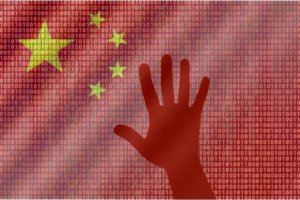
PLA Doctrine originates with CMC and it is created with a top-down driven process. There are five levels of doctrine and “three warfares”3 studied by the PLA, however operational validation of their doctrine is mostly nonexistent. At present, the Party CMC validates doctrine and utilizes their academic institutions to evaluate them. Without one clear doctrinal authority, their doctrine shows inherent weaknesses. Moreover, PLA doctrine is not uniformly studied, and the disparity between PLA officers and enlisted is significant.
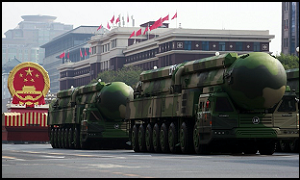
Major PLA reorganization began in 2015 and set forth a series of changes they are wrestling with today. These organizational changes have been managed and directed by the CMC. Notably, the CMC elevated the Second Artillery Force (SAF) to the PLA Rocket Force, which manages nearly all of their ballistic missile capability and established the Strategic Support Force (SSF), responsible for cyber, space, and electronic warfare domains. The establishment of the SSF demonstrates how important China views these domains to future conflicts.4 They also changed from seven to five Theater Commands in 2016 with unified military command structures that have each of the PLA Services represented. These Theater Commands focus on China and the surrounding territory, unlike the DoD whose Combatant Commands span the globe.
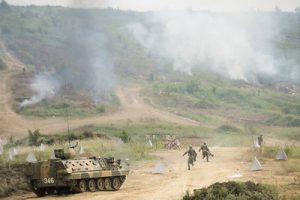
Following these organizational reforms, China began emphasizing Joint training recognizing their own weaknesses, drawing upon lessons from the U.S. military as well as Russia and other powerful militaries. China’s training focuses on the U.S. as the primary adversary, with scenarios based around defense in the South and East China Seas. China’s training is focused on Combined Arms Brigades as the primary building block of tactical-level operational systems with significant attention placed on information warfare, cyber operations, as well as Naval and Air Force missions.5 The PLA has six regional combat training centers and their national center enabling nearly one-third of their maneuver brigades to conduct rotational training exercises annually.
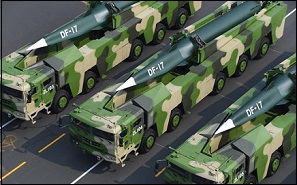
Chinese state owned enterprises produce the majority of their military equipment, with much of it near U.S. quality, and, in some cases superior. China has made significant advances in data collection and artificial intelligence, long-range fires that feature hypersonic glide vehicles, and information networks which may currently overmatch U.S. capabilities and countermeasures. China sees these emerging technologies, when incorporated with artificial intelligence, as driving a shift toward “intelligentized”6 warfare. To enable this effort, China is employing a Military-Civil Fusion effort, which capitalizes on their advanced commercial technology industry and incorporates it into their military industrial base.7 China is actively advancing research and development in biotechnology, quantum computing, and nanotechnology, but these are not yet ready for near-term employment within the PLA. However, the U.S. can expect to see PLA experimentation with these technologies by 2028.
China employs a dual-leadership system with the CMC military and political bodies. For example, the PLA unit commander and the political officer serve as co-equals. Political officers handle several leadership responsibilities, such as troop morale and education, while also managing many of the legal aspects of their unit’s mission. They serve an important role given the PLA’s 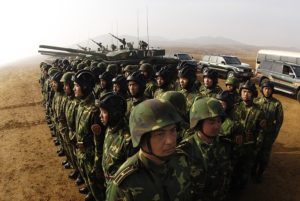 comparatively small staff at the battalion and below echelons. While this dynamic challenges decision-making, it reduces friction once decisions are made, as compared to U.S. military practices. PLA reforms have reduced the amount of corrupt leadership promotion practices while enhancing Xi’s control of the CCP. China has also reformed its military education, but new materiel and non-materiel solutions often do not have corresponding military education and training support elements, creating gaps in their ability to effectively integrate and employ new technologies. Furthermore, current PLA leaders have a narrower range of experiences to draw on, compared to U.S. counterparts, because PLA career paths emphasize depth rather than breadth of knowledge. This impacts and arguably reduces their ability to conduct Joint operations.
comparatively small staff at the battalion and below echelons. While this dynamic challenges decision-making, it reduces friction once decisions are made, as compared to U.S. military practices. PLA reforms have reduced the amount of corrupt leadership promotion practices while enhancing Xi’s control of the CCP. China has also reformed its military education, but new materiel and non-materiel solutions often do not have corresponding military education and training support elements, creating gaps in their ability to effectively integrate and employ new technologies. Furthermore, current PLA leaders have a narrower range of experiences to draw on, compared to U.S. counterparts, because PLA career paths emphasize depth rather than breadth of knowledge. This impacts and arguably reduces their ability to conduct Joint operations.
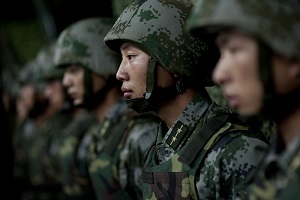
The drastic changes to the PLA’s organizational structure also resulted in corresponding changes to their personnel systems. The PLA has made major changes to their recruiting activities, focusing on “higher quality candidates.” They have also increased education requirements for enlisted and officers, and taken steps to modernize their professional military education. They are in the process of building a professional non-commissioned officer (NCO) corps, however they do not use their NCOs in the same way as the DoD. Improving the PLA’s education is meant to overcome Chinese military officers’ lack of combat experience. What is unclear is how much this lack of combat experience means in future large scale combat operations. Based on standard career trajectories, PLA officers receiving updated training will reach their first major field commands around 2035 and their first senior commands around 2050. Incidentally, 2035 and 2050 are broader benchmarks for the PLA’s overall modernization.
Prior to 2015, China’s facilities were ill-suited for Joint training. It is working to address its perceived inadequacies in combat experience through tough and realistic training at its newly developed training facilities. China now has  facilities and equipment at its ground combat training centers to challenge units across multiple domains.8 For example, the PLA has electronic warfare and cyber ranges at Zurihe, coupled with smoke generators that simulate actual equipment battle damage. China is also making strategic efforts to establish overseas military installations, which may have less to do with military training modernization and more to do with establishing regional locations to enhance its security and collect intelligence.
facilities and equipment at its ground combat training centers to challenge units across multiple domains.8 For example, the PLA has electronic warfare and cyber ranges at Zurihe, coupled with smoke generators that simulate actual equipment battle damage. China is also making strategic efforts to establish overseas military installations, which may have less to do with military training modernization and more to do with establishing regional locations to enhance its security and collect intelligence.
Current Chinese policy requires Joint capabilities above Service-specific requirements. However, compared to the U.S., they are likely less effective in conducting Joint operations at present. As such, China’s foreign policy is focused on active defense and limited warfare for now. China’s policies promote the continued enhancement in all areas across the DOTMLPF with benchmarks of 2035 and 2050. However, the PLA will be ready for a regional conflict, having achieved many of its modernization goals, well before then.
If you enjoyed this post, check out the following related content on the Operational Environment and the PLA:
The Operational Environment (2021-2030): Great Power Competition, Crisis, and Conflict and the same titled draft TRADOC G-2 white paper from which it was excerpted.
China: Our Emergent Pacing Threat
Competition and Conflict in the Next Decade
Disrupting the “Chinese Dream” – Eight Insights on how to win the Competition with China
China: “New Concepts” in Unmanned Combat and Cyber and Electronic Warfare
The PLA: Close Combat in the Information Age and the “Blade of Victory”
“Intelligentization” and a Chinese Vision of Future War
Competition in 2035: Anticipating Chinese Exploitation of Operational Environments
TRADOC G-2’s China Tri-fold; the China products page; and information on PLA weapon systems accessed via the Worldwide Equipment Guide (WEG) on the OE Data Integration Network (ODIN).
DIA’s China Military Power 2019
Dr. Jacob Barton serves as the senior contract intelligence analyst for the TRADOC G-2’s Operational Environment Integration element. He is also an Army Reserve Intelligence Officer and previously worked for the U.S. Senate and House of Representatives.
Disclaimer: The views expressed in this blog post do not necessarily reflect those of the Department of Defense, Department of the Army, Army Futures Command (AFC), or Training and Doctrine Command (TRADOC).
1 Saunders, Phillip C. and Joel Wuthnow, “China’s Goldwater-Nichols? Assessing PLA Organizational Reforms,” Joint Force Quarterly 82 (3rd Quarter, July 2016), https://ndupress.ndu.edu/Portals/68/Documents/jfq/jfq-82/jfq-82_68-75_Saunders-Wuthnow.pdf
2 Burke, Edmund J., Kristen Gunness, Cortez A. Cooper III, and Mark Cozad, People’s Liberation Army Operational Concepts. Santa Monica, CA: RAND Corporation, 2020. https://www.rand.org/pubs/research_reports/RRA394-1.html
3 Peter Mattis, “China’s ‘Three Warfares’ In Perspective,” War on the Rocks, January 30, 2018, https://warontherocks.com/2018/01/chinas-three-warfares-perspective/
4 Costello, John and Joe McReynolds, “China’s Strategic Support Force: A Force for a New Era,” Center for the Study of Chinese Military Affairs Institute for National Strategic Studies China Strategic Perspectives, No. 13, NDU Press, Washington, D.C.: October 2018.
5 Cortez A. Cooper III, PLA Military Modernization: Driver, Force, Restructuring, and Implications, Testimony presented before the U.S.-China Economic and Security Review Commission on February 15, 2018.
6 Intelligentized warfare refers to the PLA’s efforts to develop systems that can take advantage of data collection, artificial intelligence and reduce human decision-making. AI is not expected to replace PLA operational commanders, rather it will enhance commanders’ ability to make decisions. They believe that it can reduce the need for staff.
7 Gregory Allen, “Understanding China’s AI Strategy,” Center for a New American Security, February 6, 2019, https://www.cnas.org/publications/reports/understanding-chinas-ai-strategy
8 Units execute a variety of training at the Zhurihe National Training Base, including ground mobility, air, electronic warfare, and information warfare.



